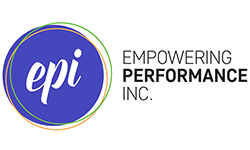Don’t Be Limited By These Creativity Myths
Josephine Denae and her models @keyah.mizer, @kiransjoberg, and @saeteeshunleashed.
I recently had the joy of seeing my daughter share her creative ideas on the runway, along with many other local designers, as part of Fashion Week MN. I was delighted by the array of styles and colors displayed by the talented participants, and the whole immersive experience reminded me that creativity is not limited to certain individuals or professions.
Understanding how we as humans harness our creativity is essential, especially with the rise of artificial intelligence. There are a lot of myths about creativity—how it works and who’s got it and why. I love good myth-busting, so I’m sharing some of the more striking creativity falsehoods here. Everyone, in every industry, should know about these myths and how believing in them may be limiting your potential.
Myth 1: Creativity is a “right brain” activity.
Fact: Both hemispheres are activated at different times during the creative process.
In fact, creative cognition involves three large-scale brain networks.
How many times have you said or heard, “I’m more of a right-brain [or left-brain] person”? Somewhere along the line (usually in childhood or adolescence), people get categorized as a certain type of thinker. If you believe creativity is only for “right-brain” people then not only are you scientifically off base, you’ve also sold yourself short.
Understanding the science of creativity goes a long way. When you know what parts of the brain are activated when, you can better understand how your own creative process works and shift out of the right-left brain paradigm.
Myth 2: Only some people are born creative.
Fact: Everyone has creative potential; creativity is both innate and teachable.
Like the “right brain” myth, children are often slotted at an early age into archetypes such as “the creative one in class” or the “logical one in the family." Do you sometimes pigeonhole yourself, believing you are “not creative”? If so, you may be limiting, denying, and devaluing your creative potential. Self-talk or subconscious belief systems can lead to self-fulfilling prophecies. And for those of us who need to strengthen our creative muscles, there’s hope!
We can actually learn creative skills. That’s right, leading-edge educators have demonstrated that creativity is a process and skillset that can be taught. And researchers at Ohio State University agree, especially when the narrative approach, which focuses on creating new worlds and shifting perspective, is used.
Myth 3: Creatives and innovators are all risk takers.
Fact: Successful creators often approach their work with caution and calculation.
We tend to believe that only high-risk innovators succeed; you must be ready to leap off a giant cliff without a safety net in order for your creation to bear fruit. However, Wharton Business School professor and researcher Adam Grant's research shows that the most successful creators are those who strategically perform a cost-risk analysis before making any huge leaps.
Sure, it’s more romantic to imagine that someone has fought against all odds to bring an innovative product, service, or idea to the world. But most creative successes have come from those who have ensured they do have a safety net—or several—in place before they leap. So, have faith! Your great creations can succeed, even if you’re a cautious or pragmatic person. In fact, your caution and pragmatism may be the qualities that allow your innovations to succeed.
Myth 4: Brilliant creations arise from an inspired innovator, toiling away alone.
Fact: Many successful creations are developed collaboratively.
The lone wolf innovator is a dangerous myth. First, it encourages the belief that only rare geniuses create the most innovative products. We know this isn't true (see Myth #2).
Second, this belief tends to idealize the creative process, sidelining the “less glamorous” aspects or people involved in the design and development phases. Sidelining is particularly damaging to team dynamics, where the creative process is inherently collaborative and everyone deserves equal acknowledgment.
Myth 5: Only people in Silicon Valley have creative freedom in the workplace.
Fact: You have more control over your creativity than you think: simple changes to your work environment and weekly habits can go a long way.
Change often occurs in baby steps. Even if your work culture is slow to embrace and empower creative thinking, there are small ways to gain control over your work environment and workday. Using simple techniques (e.g., redesigning your workspace) to empower yourself can create a significant ripple effect.
Myth 6: It’s better to create less so you can create quality.
Fact: The higher your volume of creative work, the greater your chance for success.
If you aim to always create for quality, there’s a good chance you’ll limit your potential for success. In Originals, Adam Grant recommends tripling the ideas you generate. This ensures that you’re boosting your originality and increasing your success odds. He points to composers, artists, authors, and inventors who stand out in history as the Great Creators. These Great Creators generated a huge volume of work. Obviously, not all of their work became masterpieces. But a lot did.
And, on the most practical level, creative thinking is the skill most expected to rise in importance for employers over the next four years!
In other words, don’t be afraid to create.
-Michelle Kelly, CEO (Chief Enjoyment Officer)
Recommended Reading
I recently listened to Cal Newport’s latest book, Slow Productivity: The Lost Art of Accomplishment Without Burnout. While the title implies it’s a book about productivity, it’s really a book about how to change our relationship to work so we can avoid burnout by working more calmly, with more clarity, and ideally with more creativity. Newport shares stories and research that encourage a better way to work through three core principles:
Do fewer things
Work at a natural pace
Obsess over quality (which to me means giving each task the time and attention it deserves)





